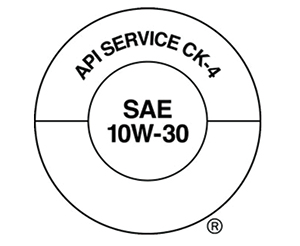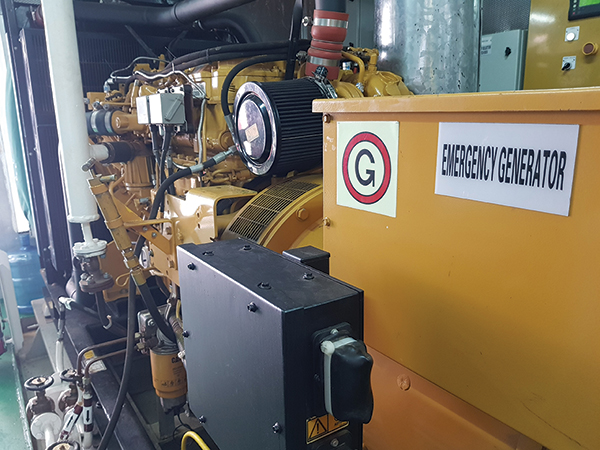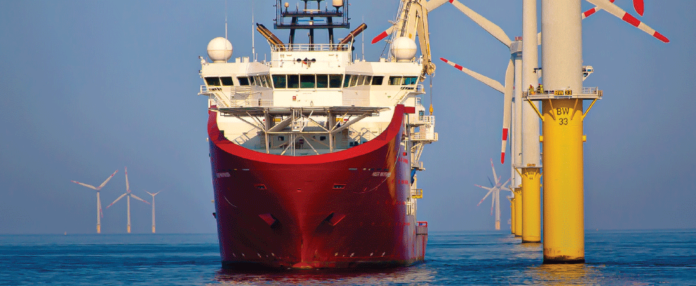Modern heavy-duty diesel marine engines require modern engine oils to keep them in working order.
That’s what Dirk Hoek, senior lubricant technical adviser U.K. & Benelux with Shell Marine, said at a February 2 webinar hosted by Riviera Maritime Media.
Heavy-duty diesel marine engines—commonly referred to as high-speed or four-stroke marine engines—are more compact than their low-speed counterparts and are typically lubricated with a multigrade engine oil. “A 15W-40 is something we are all very familiar with,” Hoek said. “There is a particular lubrication approach when we talk about these heavy-duty diesel engines.”
So what might that lubrication approach entail?
One vital aspect of the approach does not directly deal with the engine oil but rather the oil filtration system. “Filtration is often the only thing that is performed to clean out the oil in circulation” in heavy-duty diesel engines, he said. While two-stroke engines or trunk piston engines generally include what Hoek referred to as a purifier, heavy-duty diesel engines typically rely only on primary filtration—a type of oil filtration that typically allows for full oil flow and includes a bypass valve—to keep larger particles from damaging the engine.
“There is always a purifier—a lube oil separator—to remove all the soot and other contamination” in two-stroke and trunk piston engines, Hoek said. “In heavy-duty diesel engines, you won’t find a purifier; it is only filtration.”
A second consideration in the lubrication approach for heavy-duty diesel engines is oil life. “Another particular point is the way that engine oil is consumed” by heavy-duty diesel marine engines, Hoek said. “The oil eventually becomes aged and needs to be replaced.”
The method of engine oil maintenance for heavy-duty diesel engines significantly differs from that of a trunk piston engine, Hoek said. “There is a healthy consumption in a trunk piston engine, and there is continuous top-off of oil. In a trunk piston engine, the oil is never to be entirely replaced.”
On the other hand, Hoek explained that heavy-duty diesel engines are “completely different” because they periodically require full oil changes. “When we talk about 15W-40 oils or 10W-40 oils—any multigrade engine oil—you will work with oil drain intervals. Typically in marine, you will find oil drain intervals from 500 hours—that is still relatively short—up to 1,000 hours and maybe even beyond that.”
As for oil selection, Hoek posited that there are countless options for ship operators. “Each oil major has a wide variety of different 15W-40s or 5W-30s or 10W-40s, but they are all different classifications,” Hoek said. “So there is a wide variety of oils, and there is a wide variety of engine brands and engine designs. You have seen that the sulfur specification came down a lot, so it is worth revisiting the oil selection and making sure you can reach the longest oil drain interval.”
Along with longer oil drain intervals comes a concern about the performance of aged oil. “As the oil life increases, the oil condition is coming down until it reaches a certain condemnation limit” at which the oil must be replaced, Hoek said.
“We ask all our customers to submit a sample when the oil is removed from the crankcase,” Hoek said. “If we see a few times in a row that the oil is not to be condemned yet, then there is much more stretch possible; we can stretch the oil drain interval.”
He added: “Oil selection can do a lot in terms of the oil drain interval. The longer the oil drain interval, the lower” the dollar amount that ship operators must dish out for the oil itself.
Longer drain intervals can also contribute to sustainability goals, because fewer resources are used—both monetary and otherwise—when the oil does not need to be replaced as often.
An Ocean of Automotive Technology
Technology developments in heavy-duty lubricants for on-land automotive equipment has been adapted to aid progression in marine engine lubrication, Hoek explained.
How are developments in the two sectors related?
“These heavy-duty diesel engines are originating from the automotive sector because these are basically truck engines,” Hoek said. That is to say that heavy-duty marine engines are quite similar to those used in on-land, heavy-duty vehicles. Because of this, it seems logical that the lubricants used in the engines would also be similar.
|
“These heavy-duty diesel engines are originating from the automotive sector because these are basically truck engines.”
– Dirk Hoek, Shell Marine |
However, that reasoning is fundamentally flawed, as the marine sector is particularly limited in the type of fuel available for its use. And of course, different fuels often require different lubricants.
Restrictions on sulfur in marine distillate have been ever tightening. “In sulfur emission control areas, the limit used to be 1.5%,” Hoek said. “In terms of parts per million, it was 15,000. In 2010 this had become stricter, so it came down from 1.5% to 1.0%. As we all remember, the most recent change in SECA was in 2015 when the limit came down from 1.0% to 0.1%, or 1,000 ppm.”

Additionally, the International Maritime Organization’s IMO 2020 regulations lowered the cap on sulfur content in marine fuels from 3.5% to 0.5% by weight, requiring ships operating outside of emission control areas to either switch from high-sulfur fuel oil to lower-sulfur alternatives or install exhaust scrubbers on their ships, which would allow the use of heavy fuel oil that is higher in sulfur content. For ships that have made the switch to low-sulfur fuels, compatible lubricants must be used.
So the challenge of picking a suitable lubricant for heavy-duty engines used in marine applications lies in the fact that the engines are typically designed to run on “on-road fuel,” Hoek explained. And most standard automotive diesel fuel is quite different from regulation-compliant marine fuel.

“Modern engines are designed to use oil with low SAPS; low SAPS is low sulfated ash, phosphorous and sulfur,” Hoek said. “But the marine distillate is stressing the oil much more” than the engine was designed to accommodate. That is to say that the distillate commonly used to power marine vessels is significantly different from the standard automotive diesel, and the lubricants used in on-road applications are therefore not completely suitable for marine applications.
Similarly, the constant need to reduce emissions ushers in another challenge in selecting the right lubricant for heavy-duty marine engines.
“Engine systems themselves are also becoming more challenging because we have to reduce emissions,” Hoek said. “So to fight the NOx emissions, for example, exhaust gas recirculation was introduced more than 20 years ago.” Exhaust gas recirculation reduces nitric oxide by lowering the oxygen concentration in the combustion chamber as well as through heat absorption.
“One thing we found out is this introduction of exhaust gas recirculation put some additional stress on the engine oil,” Hoek said. “For that reason, a different class of engine oil was required, and in 2002 the American Petroleum Institute set the standard for a new class of heavy-duty engine oils: API CI-4.”
After the introduction of CI-4, emissions legislation around the world continued to become increasingly strict. “Exhaust gas treatment was further developed,” Hoek said. “It was getting more complex and putting further stress on the engine oil. So the next standard was introduced in 2006. That was the API CJ-4.”
API CJ-4 “is the primary performance category for high-speed, four-stroke diesel engines designed to meet 2010 model year on-highway and Tier 4 non-road exhaust emission standards, as well as for previous model year diesel engines,” according to additive manufacturer Lubrizol, which is based in Wickliffe, Ohio.
Lubrizol’s website indicates that API CJ-4 oils are particularly “effective at sustaining emission control system durability where particulate filters and other aftertreatment systems are used. Optimum protection is provided for control of catalyst poisoning, particulate filter blocking, engine wear, piston deposits, low- and high-shear stability, soot handling properties, oxidative thickening, foaming and viscosity loss due to shear.”

Oils in the most recent performance category API CK-4—introduced to the market in 2016—provide such improvements over CJ-4 oils as improved shear stability, oxidation resistance and aeration control, according to API.
These oils are backward compatible and formulated for use in all applications with diesel fuels ranging in sulfur content up to 500 ppm. They are also effective at sustaining emission control system durability where particulate filters and other advanced after-treatment systems are used, Lubrizol said.
Applications at Sea
How can heavy-duty diesel engines—and their lubricants—be used in the marine sector?
“Typically, we find them all over in shipping,” Hoek said. “They can be used in an emergency diesel generator, which is often placed outside the engine room for good reasons. The temperature in an emergency diesel generator room is often low, so that is why we have a 15W-40 oil or a 10W-40 oil. There are several variations, but it has to be able to start up at any temperature.”

Heavy-duty engine oils can be used to lubricate the engines that power hydraulic systems or facilitate the generation of electrical power on a small scale. “When there is a large pumping system, hydraulically driven, then we often see that a heavy-duty diesel engine is driving the hydraulic pump,” Hoek said. “But more often we see them used as auxiliary engines on small-scale ships.”
Heavy-duty diesel engines are also used as propulsion engines for coastal navigation vessels. However, these engines are most popularly used, Hoek said, as main generators for dynamic position ships.
Sydney Moore is managing editor of Lubes’n’Greases magazine. Contact her at Sydney@LubesnGreases.com
